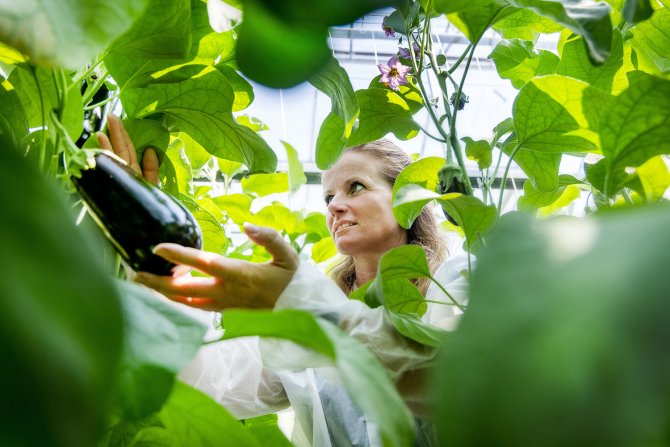
News
New coating ensures high energy savings in greenhouse
A newly developed coating on the greenhouse glass can save energy up to 20%. The coating (low_ε) is 'baked' on the outside of the glass and prevents heat from leaving the greenhouse - which saves energy, especially in winter. This is tested in research by the Greenhouse Horticulture and Flower Bulbs Business Unit of Wageningen University & Research into the cultivation of tomatoes. This year, WUR is investigating the effect of the coating on eggplant cultivation.
Model calculations showed that the Low_ε coating could save 20% energy. WUR conducted a practical test to determine whether that percentage is feasible. To this end, tomatoes were grown at the research location in Bleiswijk in 2022 in two compartments: one with low-ε coated glass, and one with traditional glass.
The research showed that considerable energy savings are indeed feasible in the cultivation of tomatoes, while production is comparable to cultivation under traditional glass. The energy savings are mainly realized in winter. The greenhouse heats up faster and cools down slower. This results in more ventilation and a greater loss of CO2 in summer. In the long warm period last year, no difference was demonstrated energetically compared to traditional glass: due to outside weather we ventilated almost the same amount in both department

The energy savings were indeed about 20%. The exact savings depend, among other things, on the cultivation strategy of the company in question, the gas price and other available technical installations. The coating can provide additional added value if it is combined with, for example, active dehumidification and green energy sources.
In 2023, WUR is investigating the effect of the low_ε coated glass on crops with a higher heat demand. Eggplant is currently being grown in two compartments for this purpose. The provisional conclusion is that the energy savings with aubergines are bigger than 20%.